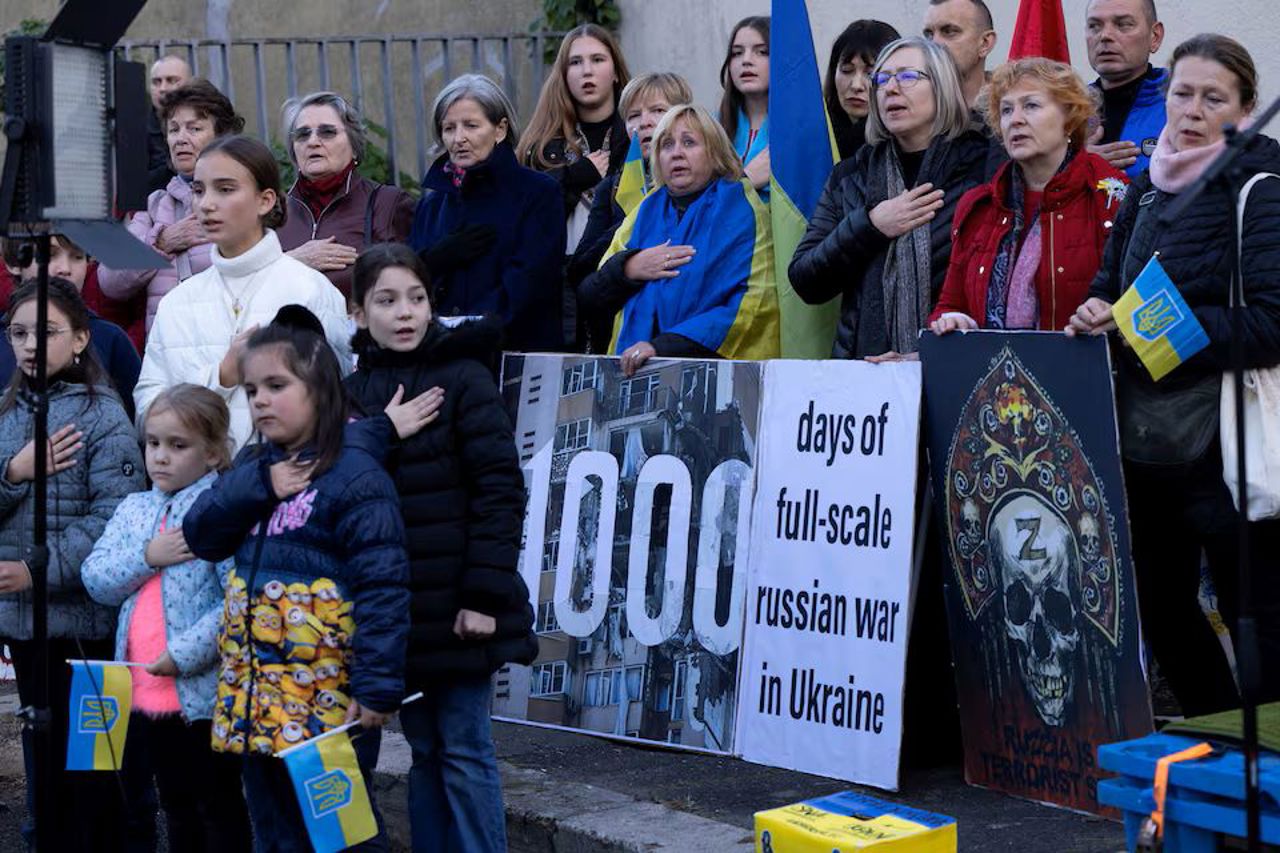1,000 days of war in Ukraine. Destroyed cities, grieving families and a transformed country
Russia's large-scale invasion of Ukraine reached its 1,000th day on Tuesday, a grim milestone in Europe's bloodiest conflict since World War II, writes news.ro.

Devastating human and material losses continue to mount, leaving Ukraine more vulnerable than ever since the early days of the war. Reuters takes stock of Ukraine's losses since the invasion.
As of 31 August 2024, the UN Human Rights Monitoring Mission in Ukraine has documented at least 11,743 civilians killed and 24,614 injured in Ukraine since the start of Russia's full-scale invasion.
But UN and Ukrainian officials say the real numbers are likely to be much higher, given the difficulty in verifying deaths and injuries, particularly in areas such as the devastated port city of Mariupol, which is now in Russian hands.
Ukrainian prosecutors said 589 Ukrainian children had been killed by November 14, 2024.
Although civilians suffered greatly, the vast majority of the dead were soldiers: a rare all-out conventional war fought by two comparably equipped modern armies was extraordinarily bloody. Many thousands died in intense fighting on heavily fortified front lines under constant artillery fire, with tanks, armored vehicles and infantry launching attacks on the trenches.
Both sides closely guard their own military casualty figures, considering them national security secrets, and Western public estimates based on intelligence reports vary widely. But most estimate hundreds of thousands of wounded and dead on each side.
Western countries believe that Russia has suffered far greater losses than Ukraine, sometimes losing more than 1,000 soldiers killed per day during periods of intense fighting in the east. However, it is Ukraine, with about a third of Russia's population, that will likely face the worst shortages resulting from the fighting of attrition.
In a rare Ukrainian reference to the death toll of its military, President Volodymyr Zelensky said in February 2024 that 31,000 members of the Ukrainian military had been killed. He did not give any figures on the number of injured or missing.
In addition to direct casualties, the war increased Ukraine's all-cause mortality rate, caused the birth rate to drop by about a third, caused more than 6 million Ukrainians to flee to Europe, and displaced nearly 4 million people internally. The United Nations has estimated that Ukraine's population has fallen by 10 million, or about a quarter, since the invasion began.
LOST TERRITORY
Russia currently occupies and claims to have annexed about a fifth of Ukraine, an area almost equal to that of Greece. Moscow's forces initially stormed northern, eastern and southern Ukraine in early 2022, reaching the outskirts of Kiev in the north and crossing the Dnieper River in the south. The Ukrainian military repulsed some of the offensive by Russian forces during the first year of the war, but Russia still held swaths of territory in the south and east, adding to territory it and its proxies had already captured in 2014.
Moscow has now captured almost the entire Donbas region of eastern Ukraine and the entire coast of the Sea of Azov in the south.
Many cities in the front area that were captured by Moscow were destroyed, the largest of which was the Azov port of Mariupol, with a pre-war population of about half a million.
Over the past year, Russia has slowly extended its grip in intense fighting, mainly in Donbas.
Ukraine, for its part, launched its first large-scale assault on Russian territory in August and captured a sliver of western Russia's Kursk region.
DEVASTATED ECONOMY Ukraine's economy shrank by a third in 2022. Despite growth in 2023 and so far this year, it is still only 78 percent of its pre-invasion size, First Deputy Prime Minister Yulia Svîrîdenko told Reuters.
The latest available assessment by the World Bank, the European Commission, the United Nations and the Ukrainian government showed that the direct damage of the war in Ukraine reached $152 billion in December 2023, with the most affected sectors being housing, transport, trade and industry, energy and agriculture.
The total cost of reconstruction and recovery was estimated by the World Bank and the Ukrainian government at $486 billion at the end of December last year. The figure is 2.8 times higher than Ukraine's nominal GDP, according to data from the Ministry of Economy.
Ukraine's energy sector has been particularly hard hit, with Russia regularly targeting infrastructure through remote attacks. Ukraine is one of the world's main sources of grain, and the disruption of its exports at the start of the war exacerbated the world food crisis. Since then, exports have largely recovered as Ukraine finds ways around the de facto Russian blockade.
Ukraine spends most of its state revenue on defense financing and relies on financial aid from Western partners to pay for pensions, public sector wages and other social expenses.
Each day of fighting costs Kiev about $140 million, said Roksolana Pidlasa, head of the parliament's budget committee. The draft budget for 2025 stipulates that 26% of Ukraine's GDP, or 2.2 trillion hryvnias ($53.3 billion), will be allocated to defense. Ukraine has already received more than 100 billion dollars from its Western partners in the form of financial aid.





